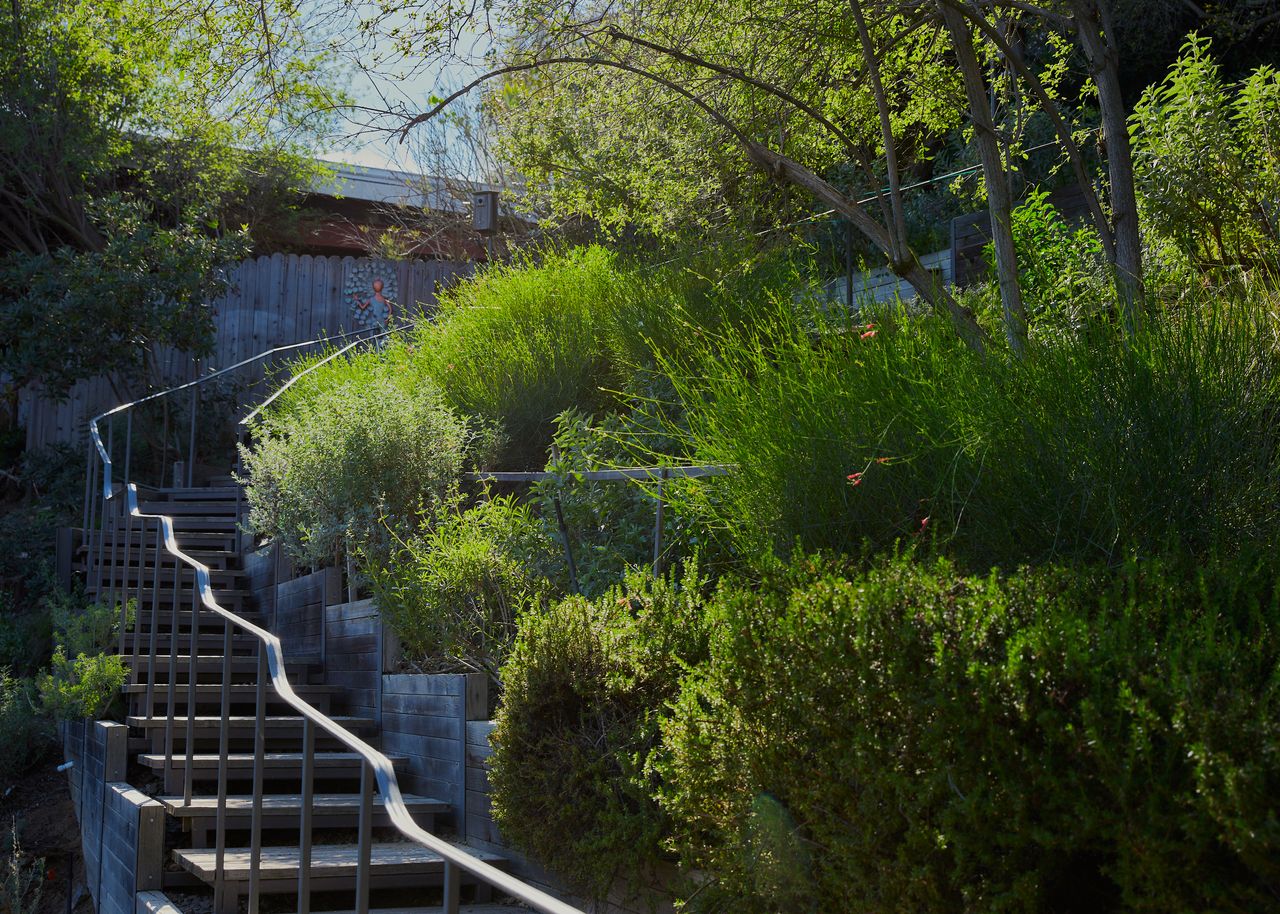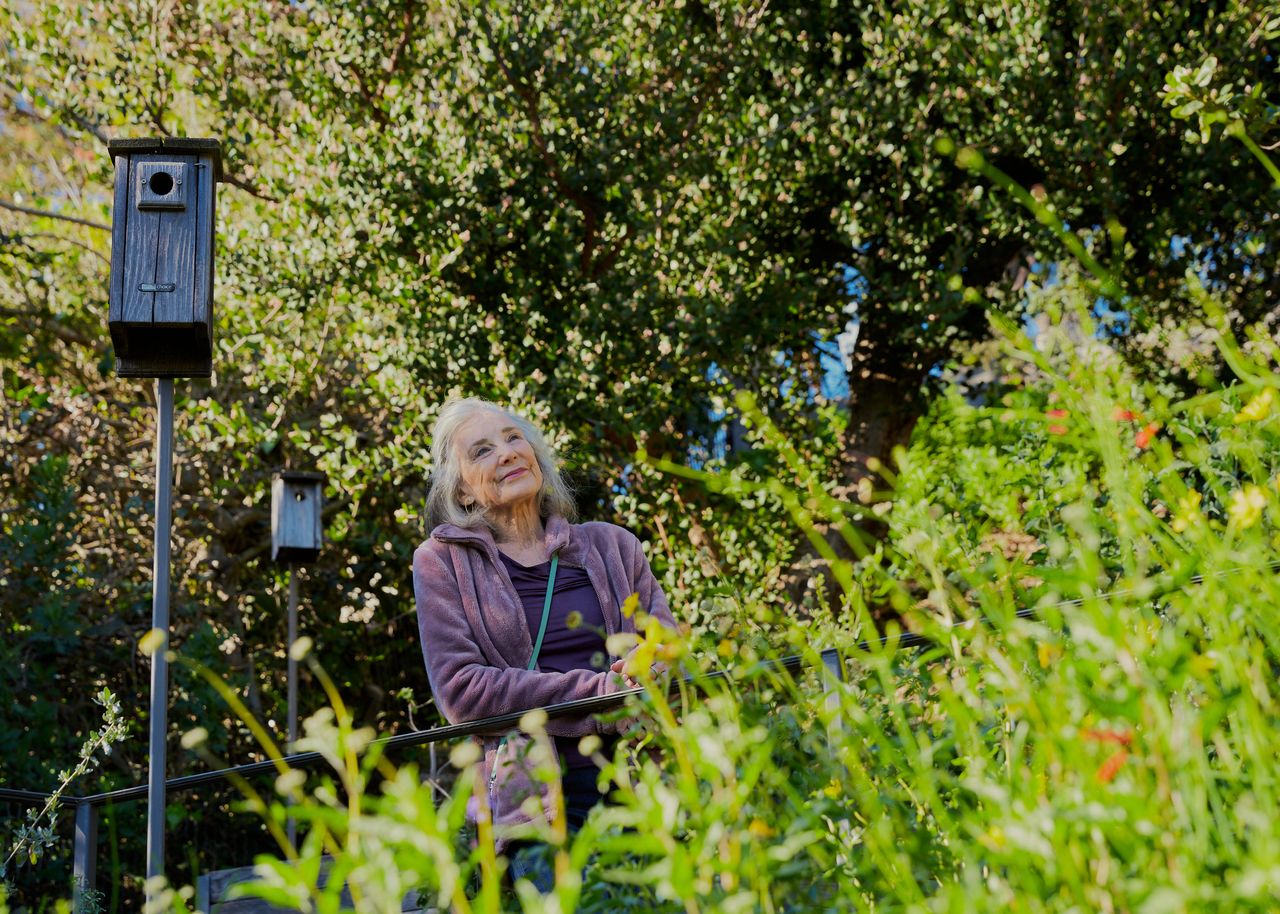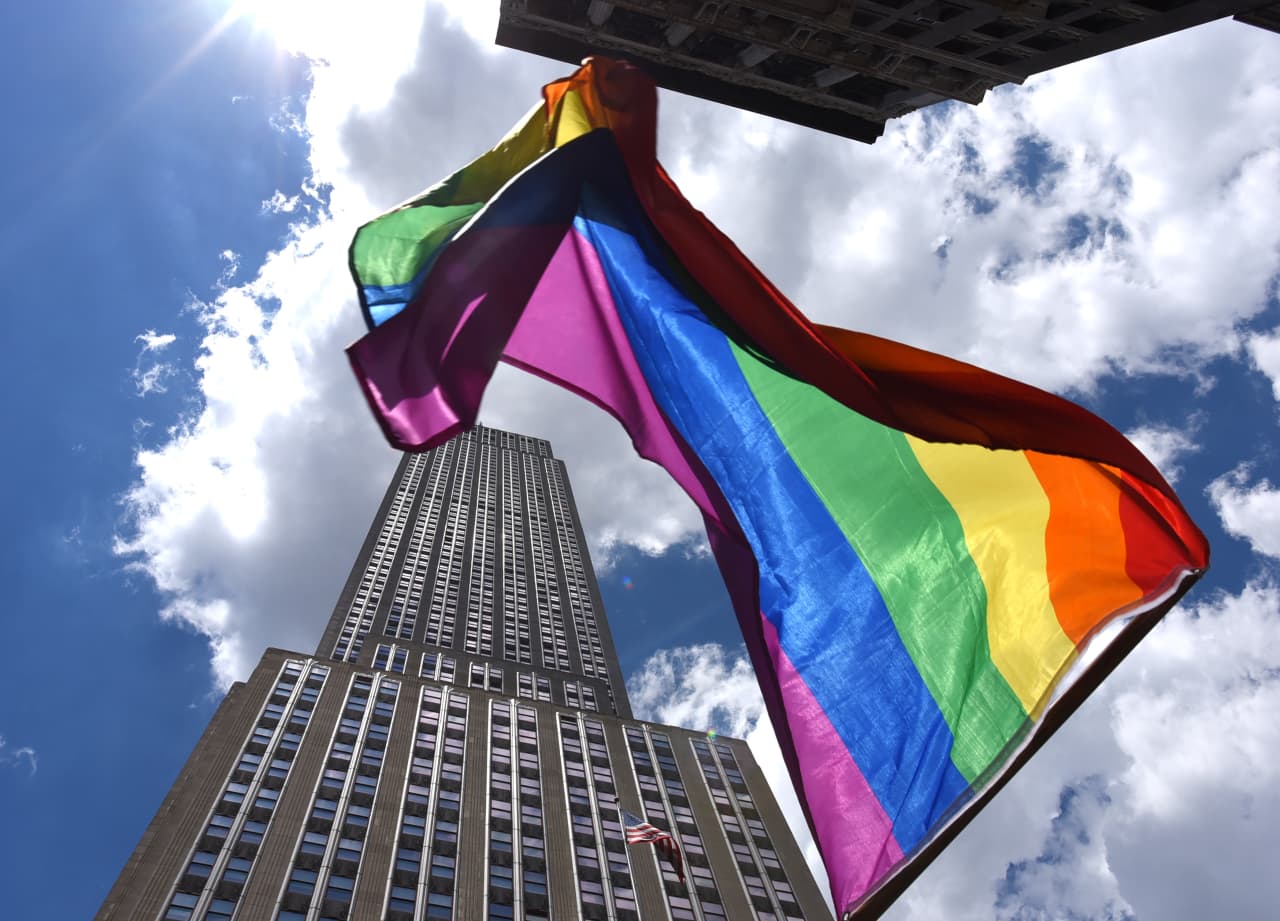Victorian-Style Houses, Hi-Tech Feeders and 10-Foot-Wide Reflecting Pools: Backyard Birding Goes Extreme
As bird watching has risen in popularity, homeowners are upping their outdoor setups to attract a variety of feathered visitors
Luxury home builder Charlie Bostwick can pinpoint the exact moment he became a bird guy.
As a teenager in Georgia in the 1980s, Mr. Bostwick, now 55, was on the second day of a canoe trip in the Okefenokee Swamp when a rare raptor—a swallow-tailed kite, to be exact—flew overhead.
“That was my ‘spark bird,’ the one that starts the flame that envelops you for the rest of your life,” said Mr. Bostwick, founder of Brightwater, an architecture and building firm. “At the time, everyone I knew who loved birds were little old ladies,” he said. Eventually, he embraced birds and birding as a way to connect to nature. “There’s a bit of a game in it—like Where’s Waldo? on a much larger and moving scale,” he said.
In addition to traveling the world on birding expeditions, Mr. Bostwick has also embraced backyard birding and designs homes with flock-friendly features like native landscaping and windows to maximise views of the outdoors. At his home near Atlanta, an 8,000-square-foot English Tudor on 2.3 acres, he added a ¼-mile mulched walking trail and planted a cross vine on the front of the house with tubular flowers to attract hummingbirds. The circa-2006 house, which he plans to list for $3.2 million, has six bedrooms, a billiards room and a climbing room. Outside, there is a pool, putting green, several bird feeders and a bird bath. “Birds will drink from the swimming pool,” he said, “but most people probably don’t like to think about that.”
Birding has long been a hobby for nature lovers, but the pursuit has recently gone more mainstream—boosted by the rise of ecotourism and the surging interest in a safe and relaxing pastime during the pandemic, along with user-friendly apps that bird lovers can use to record and track different species. Now, some enthusiastic hobbyists are springing for landscape redesigns, specialty bird food and high-tech bird feeders to attract and photograph feathered visitors.
In addition to his own home, Mr. Bostwick recently designed and built a $4 million house in Palmetto Bluff, a luxury gated community in Bluffton, S.C., with bird watching in mind. Although there was space on the 0.4-acre lot for a larger home, Mr. Bostwick built a relatively modest, 2,700-square-foot house with four bedrooms to avoid cutting down trees, a natural bird habitat. The house is also long and narrow to accommodate more windows, and there is a long porch that faces a marsh, an environment that attracts sandpipers, herons and egrets. “One of the things that attracted me [to the project] was the variety of potential birds that could be on that site,” he said.
In 2016, there were about 45 million bird watchers nationwide, according to the most recent data available from the U.S. Fish and Wildlife Service. Birders spent nearly $29 billion on birding equipment that year, the data showed. Since then, some anecdotal evidence indicates that the number of birders has skyrocketed, especially since the pandemic. In the months after the initial lockdowns, downloads of the National Audubon Society’s bird identification app doubled compared with the same period a year earlier, the group said. In 2022, the American Birding Association’s podcast was downloaded more than 605,000 times, up more than 75% from 2020.
“It’s been a crazy ride,” said Michelle Mohilef, who, in 2011 launched Pacific Bird and Supply Co., a Los Angeles-based bird-food manufacturer, with her sister, Danielle Mohilef. “It sounds like this obscure hobby—but it’s really not,” she said. Backyard birders are known to spend anywhere from $5 for a bag of bird seed to hundreds of dollars on high-quality food, feeders and other accessories, said Danielle Mohilef, who has 10 to 12 feeders in her own yard. “People treat their backyard birds like pets,” she said.
John Looser, 58, a former home builder in Ontario, Canada, said he has been building “extreme birdhouses” for about 20 years—some with hundreds of rooms and Victorian-style architectural flourishes. He started building birdhouses after injuries forced him to retire from construction but found it was a relaxing pastime. Using reclaimed barn wood and new cedar, he estimated that he has completed around 5,000 houses, the biggest of which are 9-feet wide by 9-feet tall and weigh 500 pounds.
Mr. Looser, who has sold his biggest birdhouses for $2,200 each, said he uses a friend’s tractor to mount his largest creations onto thick wooden posts in his yard. He currently has 30 birdhouses that attract throngs of birds—and busloads of tourists. “When you drive by you can’t mistake what you see. It just doesn’t look like everybody else’s property,” said Mr. Looser, who lives in a renovated 1894 farmhouse on about ½ acre of land. He said he goes through about 100 pounds of bird food a week, which costs him $145 to $220 a month.
In the Hamptons, landscape architect Melissa Reavis of Hollander Design said she’s installed luxurious water features for clients who want to attract more birds to their property. “Migrating birds are attracted to the sound of water,” she said. “The birds will drop down out of the sky if they hear the sound of water.”
Ms. Reavis said two of her clients, actor Neil Patrick Harris and his husband, chef David Burtka, who have a home in East Hampton, N.Y., installed a 10-foot-wide circular reflecting pool for birds, which were already drawn to their property by an existing vegetable garden and orchard. “It’s teeming with birds,” she said of the reflecting pool. “So much so that we originally put fish in it, and they were all immediately eaten.” Ms. Reavis said the cost of adding a water feature can vary wildly, and Hollander has done projects for $25,000 to $250,000, which could include LED light strips, custom welded-steel fabrication and filtration systems. “Depending on the size, it’s almost like building a swimming pool,” she said.
Besides water, Ms. Reavis touts ecologically sustainable gardens with native plants and insects as the best way to attract birds. “It’s a hard sell,” she said. “A lot of people have a real hard time swallowing that, when they pay so much for a landscape that is then devoured” by bugs.
For Beverly Hills environmentalist Susan Gottlieb, native plants, insects and birds have become a virtuous cycle. Ms. Gottlieb, 81, said she grew up without running water in Canada’s mining country and had always been mindful of her water usage. When she and her husband, Dan Gottlieb, 82, a real-estate investor, bought a Midcentury Modern house in Beverly Hills in 1985, Ms. Gottlieb said she began planting drought-tolerant and native plants on the 1-acre property to conserve water. Because native plants harbour insects, they attracted birds and Ms. Gottlieb—who watched her mother feed birds as a child—said she added one bird feeder after another to entice them further.

Now, the Gottliebs’ garden is a local landmark with close to 20 bird boxes, three seed feeders, four mealworm feeders and around 15 hummingbird feeders. Ms. Gottlieb said she goes through about 70 pounds of sugar a month making hummingbird nectar. At roughly $6.50 for a 10-pound bag, that adds up to $546 a year. Over the years, the Gottliebs have opened their garden to visitors and hummingbird researchers from the University of California Davis. Ms. Gottlieb has also published four coffee table books about the couple’s native garden.
“I’m on a mission to get people to understand the importance of native plants and conserving our heritage and our wildlife,” she said. In 2019, the Gottliebs—who bought their 3,400-square-foot home for $750,000 nearly four decades ago—paid $18 million for a roughly 11,000-square-foot house across the street, records show. Ms. Gottlieb said they currently rent it out.
Scott Logan, a naturalist and photographer who works with Ms. Gottlieb to document birds and other wildlife in her garden, said he uses broadcast-quality video and digital SLR camera traps, which are triggered by movement to take pictures. He installed them throughout the garden, mounted on tripods camouflaged by branches that are secured with zip ties. Each camera is also covered with wood painted to blend in with the environment.
In Los Angeles, anaesthesiologist Carole Turek found she could get a direct shot of her 16 hummingbird feeders by mounting a security camera to the wall of her 1,200-square-foot balcony, which overlooks Laurel Canyon. “Hummingbirds a mile away can see my feeders,” said Dr. Turek, 75, who paid $680,000 for her three-bedroom condo in 2009, records show.
Dr. Turek, who streams video footage of her birds on YouTube, said she goes through about 100 pounds of sugar a week during the busy season, storing bins of sugar and 8 gallons of nectar in an outdoor kitchen on her terrace. She typically buys 200 to 250 pounds of sugar at a time, paying about $1 per pound in 50-pound bags. “Those feeders never run dry,” she said.
Since she first started feeding hummingbirds more than 30 years ago, Dr. Turek said her obsession with birds has only grown, and she now travels to Central and South America to photograph different hummingbird species. “I would say that I’m semiretired but I still work to support this obsession,” she said. “Once you’re hooked, you’re hooked.”
Dr. Turek estimated that she’s spent several hundred thousand dollars on birding, including travel. Her YouTube channel offsets some of that cost with about $20,000 a year in advertising revenue; one of her best-performing videos, of baby birds hatching, has yielded $17,000 to date, she said.
Short of fancy SLR or surveillance cameras, amateur birders have gotten into bird watching thanks to smart feeders with cameras that are compatible with their cellphones, said Kecia Cole, who owns three Wild Birds Unlimited stores in Washington with her husband, Greg Cole. The Bird Buddy, which costs $199.99, sends users notifications and photos when the bird feeder is in use, according to the company website. A model with a solar roof is available for $269. Ms. Cole said customers often get excited about birds after getting a Bird Buddy for Christmas.
The Coles, who live in Buckley, Wash., about 25 miles southeast of Tacoma, are avid birders themselves. Ms. Cole, 54, said she started birding in middle school after someone gave her a list of birds she could see in her yard. Mr. Cole, 50, married into the hobby. After buying their home for $437,000 in 2005, the Coles planted apple and cherry trees to attract birds, and they breed mason bees to boost pollination. Set on 5 acres, with views of Mount Rainier, the property has a 2,400-square-foot house with four bedrooms, a separate workshop and multiple sheds. They have multiple bird feeders suspended from a pulley that Mr. Cole designed to keep them away from a local bear.
Scott Keller, a former insurance agent in Akron, Ohio, said he has parlayed demand for bird videos into a business.
Mr. Keller, 38, who was a biology major in college and likes birds because they are “consistent and diverse,” started a bird-focused website several years ago with reviews of binoculars and other birding accessories. Later, he installed two high-definition security cameras on his property and began to stream 24/7 footage of his backyard feeders on his YouTube channel, Bird Watching HQ. Mr. Keller lives in a four-bedroom Colonial-style house on 1.5 acres that he bought for $310,000 in 2016. Last year, he spent $5,614 on bird food, up from $3,722 in 2021. “You get addicted,” he said.
Mr. Keller said Bird Watching HQ’s “hockey stick moment” came during Covid when people were stuck at home. The YouTube channel currently has more than 90,000 followers, and last year, his business generated $300,000 in revenue from ads and affiliate purchases, Mr. Keller said. Teachers and nursing homes regularly tune in to the live feed, and he has a live feed displayed on a TV screen above his desk. “It’s great background noise,” he said. Not all his viewers are human. “A lot of people use these for their cats,” he said.
 Copyright 2020, Dow Jones & Company, Inc. All Rights Reserved Worldwide. LEARN MORE
Copyright 2020, Dow Jones & Company, Inc. All Rights Reserved Worldwide. LEARN MORE
This stylish family home combines a classic palette and finishes with a flexible floorplan
Just 55 minutes from Sydney, make this your creative getaway located in the majestic Hawkesbury region.
As Paris makes its final preparations for the Olympic games, its residents are busy with their own—packing their suitcases, confirming their reservations, and getting out of town.
Worried about the hordes of crowds and overall chaos the Olympics could bring, Parisians are fleeing the city in droves and inundating resort cities around the country. Hotels and holiday rentals in some of France’s most popular vacation destinations—from the French Riviera in the south to the beaches of Normandy in the north—say they are expecting massive crowds this year in advance of the Olympics. The games will run from July 26-Aug. 1.
“It’s already a major holiday season for us, and beyond that, we have the Olympics,” says Stéphane Personeni, general manager of the Lily of the Valley hotel in Saint Tropez. “People began booking early this year.”
Personeni’s hotel typically has no issues filling its rooms each summer—by May of each year, the luxury hotel typically finds itself completely booked out for the months of July and August. But this year, the 53-room hotel began filling up for summer reservations in February.
“We told our regular guests that everything—hotels, apartments, villas—are going to be hard to find this summer,” Personeni says. His neighbours around Saint Tropez say they’re similarly booked up.
As of March, the online marketplace Gens de Confiance (“Trusted People”), saw a 50% increase in reservations from Parisians seeking vacation rentals outside the capital during the Olympics.
Already, August is a popular vacation time for the French. With a minimum of five weeks of vacation mandated by law, many decide to take the entire month off, renting out villas in beachside destinations for longer periods.
But beyond the typical August travel, the Olympics are having a real impact, says Bertille Marchal, a spokesperson for Gens de Confiance.
“We’ve seen nearly three times more reservations for the dates of the Olympics than the following two weeks,” Marchal says. “The increase is definitely linked to the Olympic Games.”

Getty Images
According to the site, the most sought-out vacation destinations are Morbihan and Loire-Atlantique, a seaside region in the northwest; le Var, a coastal area within the southeast of France along the Côte d’Azur; and the island of Corsica in the Mediterranean.
Meanwhile, the Olympics haven’t necessarily been a boon to foreign tourism in the country. Many tourists who might have otherwise come to France are avoiding it this year in favour of other European capitals. In Paris, demand for stays at high-end hotels has collapsed, with bookings down 50% in July compared to last year, according to UMIH Prestige, which represents hotels charging at least €800 ($865) a night for rooms.
Earlier this year, high-end restaurants and concierges said the Olympics might even be an opportunity to score a hard-get-seat at the city’s fine dining.
In the Occitanie region in southwest France, the overall number of reservations this summer hasn’t changed much from last year, says Vincent Gare, president of the regional tourism committee there.
“But looking further at the numbers, we do see an increase in the clientele coming from the Paris region,” Gare told Le Figaro, noting that the increase in reservations has fallen directly on the dates of the Olympic games.
Michel Barré, a retiree living in Paris’s Le Marais neighbourhood, is one of those opting for the beach rather than the opening ceremony. In January, he booked a stay in Normandy for two weeks.
“Even though it’s a major European capital, Paris is still a small city—it’s a massive effort to host all of these events,” Barré says. “The Olympics are going to be a mess.”
More than anything, he just wants some calm after an event-filled summer in Paris, which just before the Olympics experienced the drama of a snap election called by Macron.
“It’s been a hectic summer here,” he says.

AFP via Getty Images
Parisians—Barré included—feel that the city, by over-catering to its tourists, is driving out many residents.
Parts of the Seine—usually one of the most popular summertime hangout spots —have been closed off for weeks as the city installs bleachers and Olympics signage. In certain neighbourhoods, residents will need to scan a QR code with police to access their own apartments. And from the Olympics to Sept. 8, Paris is nearly doubling the price of transit tickets from €2.15 to €4 per ride.
The city’s clear willingness to capitalise on its tourists has motivated some residents to do the same. In March, the number of active Airbnb listings in Paris reached an all-time high as hosts rushed to list their apartments. Listings grew 40% from the same time last year, according to the company.
With their regular clients taking off, Parisian restaurants and merchants are complaining that business is down.
“Are there any Parisians left in Paris?” Alaine Fontaine, president of the restaurant industry association, told the radio station Franceinfo on Sunday. “For the last three weeks, there haven’t been any here.”
Still, for all the talk of those leaving, there are plenty who have decided to stick around.
Jay Swanson, an American expat and YouTuber, can’t imagine leaving during the Olympics—he secured his tickets to see ping pong and volleyball last year. He’s also less concerned about the crowds and road closures than others, having just put together a series of videos explaining how to navigate Paris during the games.
“It’s been 100 years since the Games came to Paris; when else will we get a chance to host the world like this?” Swanson says. “So many Parisians are leaving and tourism is down, so not only will it be quiet but the only people left will be here for a party.”
This stylish family home combines a classic palette and finishes with a flexible floorplan
Just 55 minutes from Sydney, make this your creative getaway located in the majestic Hawkesbury region.






















